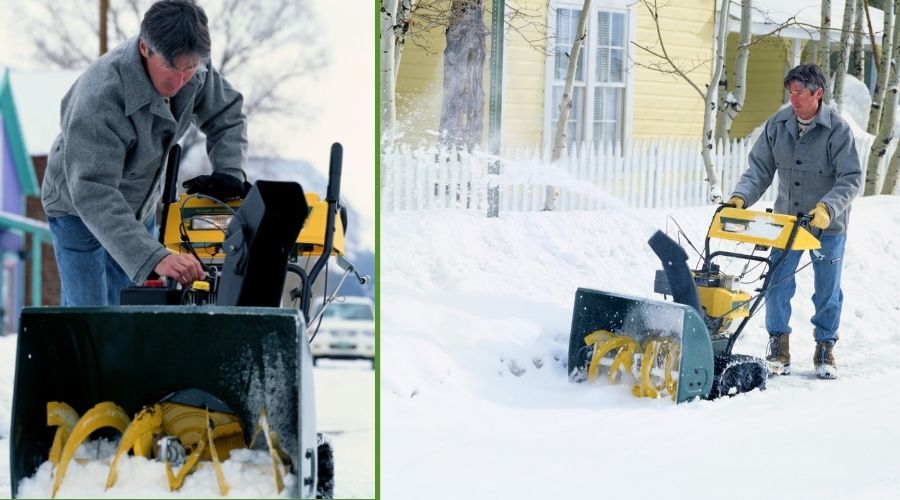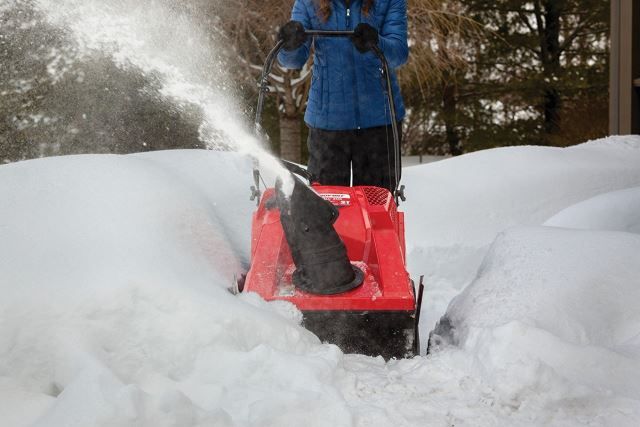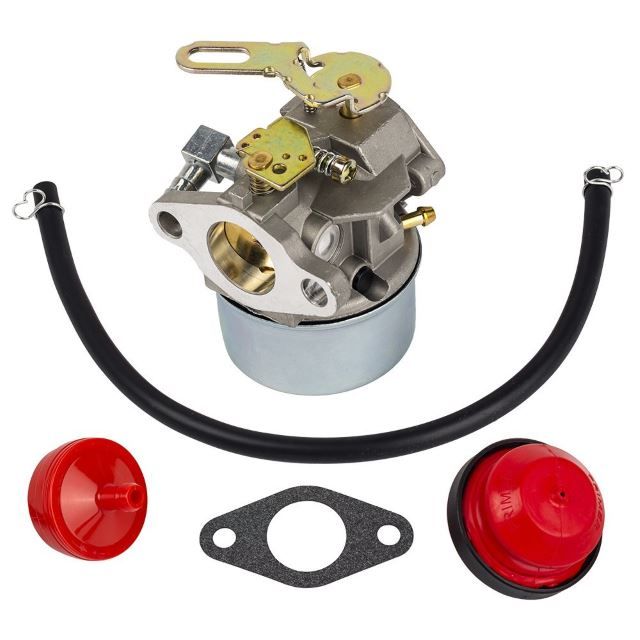Nothing is worse than getting set to clear freshly fallen snow only to find that your snow blower won't fire up or properly throw the snow. Even if you regularly service your machine, at least every other year, the occasional glitch is unavoidable.
At Backyard Boss, we are winter machinery authorities; we've tested and reviewed all sorts of blowers, throwers, sweepers, and plows. To prep for this article, we spoke with several snow blower repair experts to get a list of the most common problems and how to fix them. Maybe your issues are covered here, too, and we can save you an expensive trip to the repair shop or to grandpa's garage.
Before you dive in, you may want to have a look at our how to start a snow blower guide. If you do end up needing a new machine, you can always check out our reviews of the best and most reliable snow blowers.
The Snow Blower Engine Won't Start
This article is for troubleshooting a gas-powered snow blower. But, if you are having trouble with an electric unit, we have a separate article for electric snow blower starting issues.
For a gas machine, you should first check that there's fuel in the tank and whether that fuel is fresh. Old fuel causes carburetor problems. Likewise, a snow blower left uncovered in the elements may have water mixed in. In both cases, drain the spoiled fuel and dispose of it safely.
If low or old and watery fuel is not your issue, check to make sure that all of your blower switches, including the fuel shutoff valves as well as any safety keys your model may have, are in the correct positions and in working order with no visible damage.
Cold weather operation requires adequate engine warm-up time and proper use of a choke and throttle to get fuel where it is needed without flooding the engine. Priming the carburetor in winter occasionally causes flooding also, so first put your choke to full and have your throttle at ¾ speed or higher to avoid the issue.
Furthermore, checking your spark plug is another good practice as they may gum up quickly. If your spark plug is wet when you remove it, you have flooded the engine and will need some of that excess fuel to dissipate before moving forward. Be sure to check the gap size as well as to look for cracks in the porcelain. That said, most spark plugs are easy and affordable to replace.
The Auger Won't Turn
When your machine fires up but the auger isn't turning, you won't get much done - practically nothing, to be perfectly honest. Whether you have a single-stage or dual-stage blower, the first thing you should check is ice buildup within the interior parts of your blower.
Regular cold weather use and above-freezing garage storage can cause a series of melts and freezes that initiate a buildup of ice and keep the auger from turning. If this is the case, it is an easy fix most of the time.
If you're certain the auger is clear of snow and ice, then you'll need to check the belt and shear pins (or bolts).
The most common problem with augers is when the shear pins break or become otherwise compromised due to excessive strain and pressure from regular use. In addition, the bearings may also go bad over time. But, they are usually quite easy to replace if that is the case with your machine. That said, keep in mind that you may need to replace the entire auger along with the bearings as well.
The Snow Blower Won't Throw Snow
When your machine won't throw snow it is typically because the auger isn't turning properly, or you may have something blocking the chute.
First, turn off your machine (if the auger is turning at all), and check what is blocking the opening. Sometimes things are hidden in the snow and can get sucked up through the chute. Snow also sometimes become packed with ice and become too heavy to toss. If you know it is clear, and it keeps clogging, then check to make sure the auger is engaged. If it isn't, follow the suggestions above.
Another problem that may occur with dual-stage blowers is when the impeller stops working. The impeller (also called a turbine, or second auger) turns behind the main auger to help propel snow outwards through the chute. As long as this is turning, you know the belt is good, but if it isn't, the first thing to look for is whether or not the roll pins are still intact.
The Snow Blower Keeps Stalling
A snow blower that keeps stalling most likely has a carburetor issue. This is due to dust, dirt, oil, and grime, over time, creating a hot mess that inhibits the air and fuel flow to the carburetor.
To alleviate the issue, simply clean it all out, as well as everything around it. Sometimes this is all you need to get your machine running smoothly again. If not, then go ahead and rebuild or replace the carburetor– these are inexpensive and easy to change out. Just make sure that you order the right parts for your particular machine!
Also, be sure to check your fuel cap vent before getting moving forward with rebuilding the motor or replacing the carb. Air needs to enter the tank to make up for the fuel that is being used. If the vent is clogged it can stall out the engine.
To troubleshoot this issue, try running your machine with a loosened fuel cap for a bit to see if that might be the cause. If it is, then purchasing a new cap should take care of the issue.
What Do You Do When Your Snow Blower Won't Start
A poorly running snow blower, or even one that fails to start, isn't a reason to panic. Many times there is a simple and inexpensive solution to the underlying issues. That said, gas-powered engines need regular maintenance, and the time your machine spends sitting in the garage waiting for the next season can cause some issues if you haven't properly maintained it; especially during the winter months.
Do you have a quick tip or troubleshooting advice for our readers about what to do when their snow blower doesn't want to start? If so, wed love to hear about it in the comments section below!



